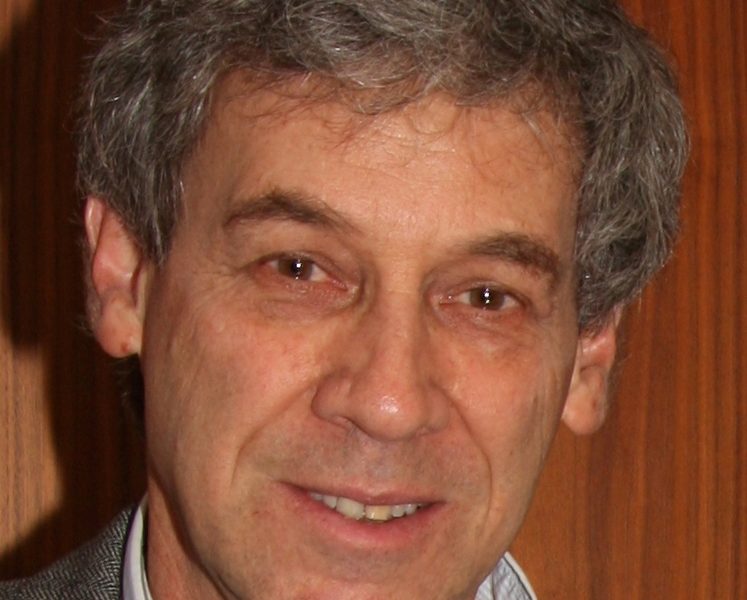OpEds
Arts pioneers aim to outpace the barbarism
The battle since December to protect this country’s political values, symbolised by Zuptagate and Nkandla, echoes another struggle for the country’s soul in art, music, literature and other forms. This is epitomised by the disgraceful burning of 23 artworks at the University of Cape Town during a student protest in February.

Geoff Sifrin
Taking Issue
In contrast to this cultural barbarism, South Africa is fortunate to also have visionaries who are cultivating South African art, such as entrepreneur Benji Liebmann, who has established a huge, lush sculpture garden in the Cradle of Humankind, called Nirox.
It is open to the public for a few months each year, featuring works by celebrated sculptors such as Angus Taylor, Willem Boshoff and others, and offers residencies for selected artists to live there to produce works. Two weeks from now, the festive opening for 2016 takes place. Equally bold, Liebmann’s son Jonathan is the developer of Maboneng arts precinct in Johannesburg’s CBD, where well-known and rising artists have studios.
Jews should be especially sensitive to artworks’ desecration, given Jewish history and their long-time involvement in the arts. As German-Jewish poet Heinrich Heine wrote prophetically in 1821: “Where they burn books, they will also ultimately burn people.” The burning of artworks is ominous.
UCT Vice-Chancellor Max Price faces an unenviable task, trying to hold the fort against destructive rampages born out of the Rhodes Must Fall movement. The university has now reacted by taking down or covering dozens of its artworks that might be considered “offensive”.
Its large collection includes 1 100 pieces displayed in 50 buildings on five campuses by 520 South African artists. The important Porer collection includes works by celebrated artists such as Steven Cohen, William Kentridge, Cecil Skotnes, Pippa Skotnes, Zwelethu Mhethwa, Stanley Pinker, Marion Arnold, Guy Tillim, Malcolm Payne, Mark Hipper and Paul Stopforth. Other artists include Diane Victor and anti apartheid playwright Breyten Breytenbach, who have expressed dismay at the removal or covering of their works.
A UCT task team is assessing the collection through the prism of transformation and inclusivity, particularly pieces which might offend for how they depict black people, and looking – according to its brief – for artworks that “may be seen to recognise or celebrate colonial oppressors”.
With South Africa’s history of white domination and contempt for black people, one can understand black students’ ire at pieces they find offensive. Some of UCT’s halls are adorned with portraits of dead white men in colonial mode, evoking discomfort. To add to this is the dominant colonial-era architecture, influencing the students’ experience of it.
However, great art can come from anywhere, notwithstanding the artist’s politics. JH Pierneef’s landscape paintings, for example, are exceptional despite his racism and role in the Broederbond. Johannesburg’s Standard Bank Gallery recently hosted a major exhibition of his works.
For Jews, Wagner’s music has long been beyond the pale because of his anti-Semitism and status as Hitler’s favourite composer. For years, the Israel Philharmonic Orchestra did not play Wagner. Yet classical music without Wagner would be infinitely poorer.
Some of the world’s greatest, provocative artists have been Jews, such as the Abstract Expressionists in New York in the 1940s, riddled with Jewish names – Mark Rothko, Helen Frankenthaler, Barnett Newman and others.
South Africa’s cultural battle, like the political one, will be fought for many years to come. Its post-apartheid identity, politically and culturally, is in flux. The best art provokes questioning. If we only allow sanitised, politically correct works which toe the “party line”, society will be the worse for it.
Wily politicians are adept at pursuing agendas through narrow racial prisms. This is as dangerous in politics as it is in the arts.
Read Geoff Sifrin’s regular columns on his blog sifrintakingissue.wordpress.com
nat cheiman
April 14, 2016 at 5:19 am
‘The real problem regarding the cultural battle is a lack of education or at least a lack of quality in education.
Then there is a culture of entitlement which has been engendered by the ANC.
Finally, there is a deficiency of decency and willingness to understand other points of view. So much so that there are cretins that think they can rewrite history on a blank canvas.
It is interesting to note that students involved have not contributed one iota to SA nor its history.
I predicate that these delinquents will not amount to anything in later life, whether or not they achieve their degrees etc.’
Jessica
April 15, 2016 at 10:42 am
‘It goes even further than burning artworks. The oft-stated aim of the ANC regime and their sidekicks – in policy documents and from the podium – is to take over and centralize (read: revolutionize) all state institutions in terms of their hybridized version of Africanism and communism.
They are quite blasé about it. For them this means that universities must also be targeted for sacking, i.e. for their academies and campus cultures to be revolutionized and Africanized – again, in accordance with their weird ideas of what \”Africanism\” constitutes.
As far as Afrikaans tertiary education is concerned, they’ve been spectacularly successful. The remaining Afrikaans-medium universities are currently in their last throes of being dismantled and plundered – that is, anglicized and \”Africanized\”. ‘